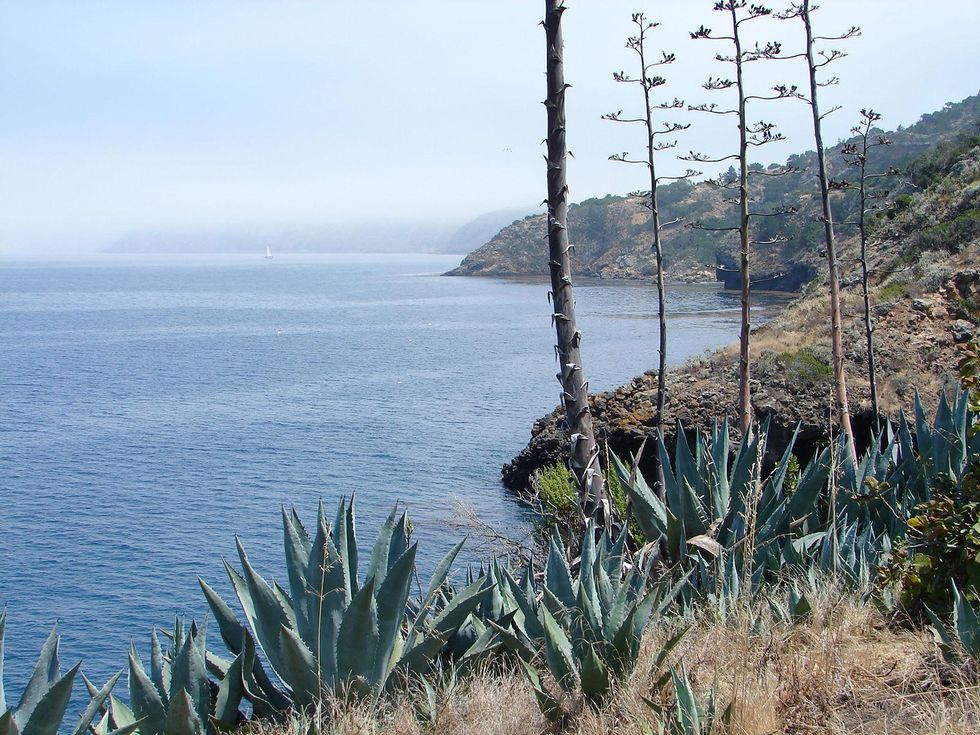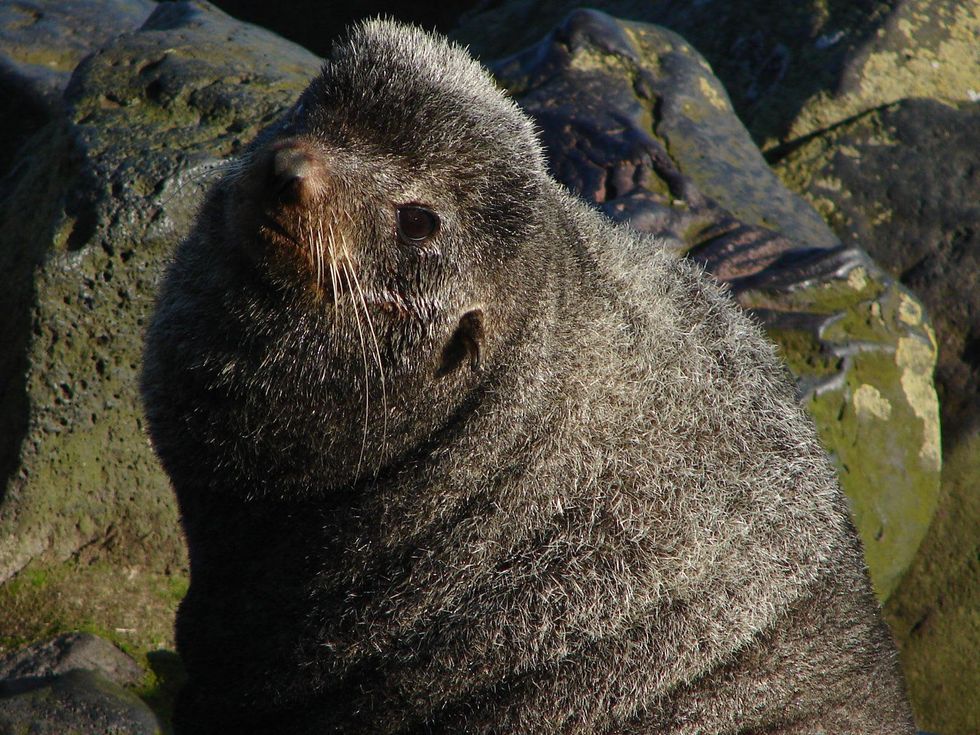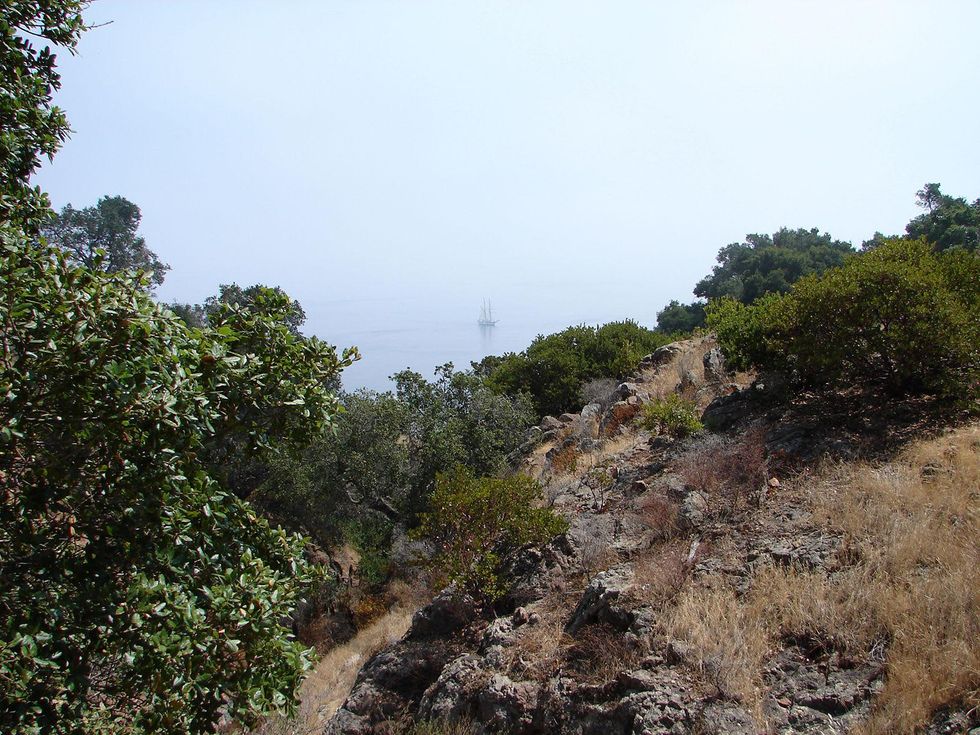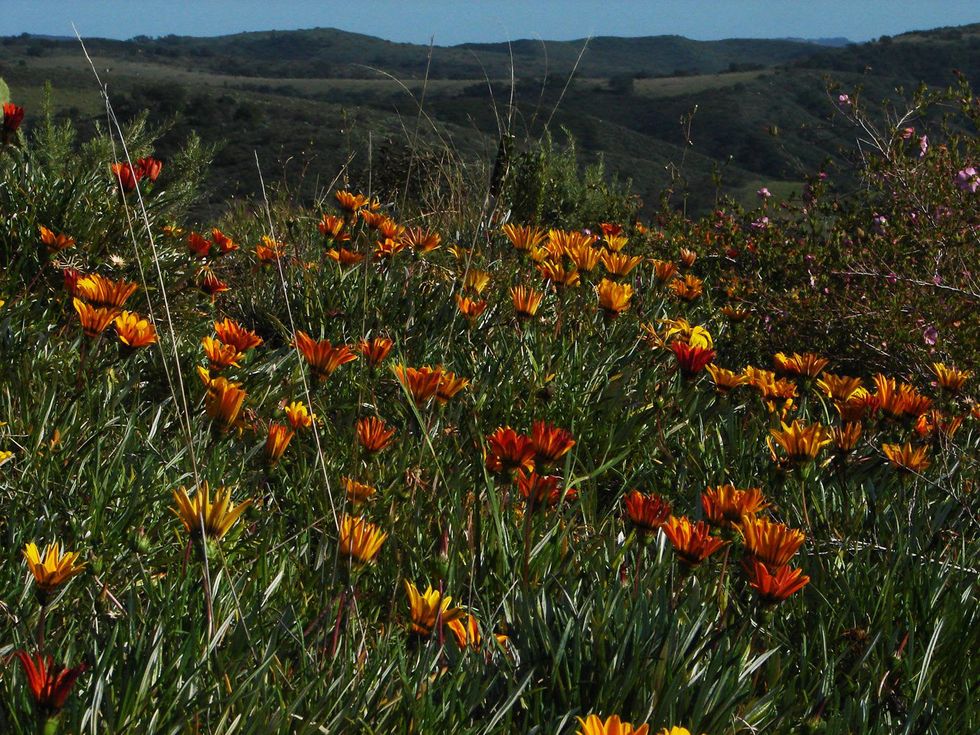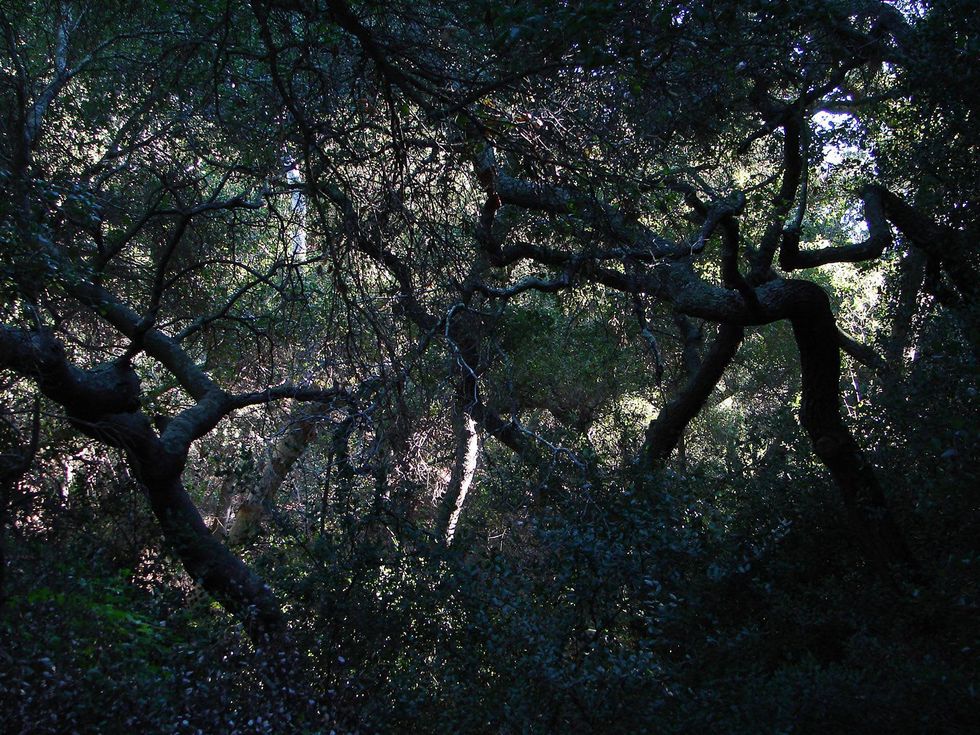Travelin' Man
The islands of Southern California: Ignore fake Hollywood and overpriced Beverly Hills for rare nature
Among southern California’s sprawling suburbs, Hollywood’s hustle and the traffic choked freeways, it is hard to imagine that a few dozen miles offshore exists another world. A place where wildflowers drape undeveloped hills, where forested canyons harbor the sound of running water and birds, where it is possible to experience California’s coast the way it was hundreds of years ago.
Time travel is not required — just some decent sea legs for the hour long crossing of the Santa Barbara Channel. The jumping off point for the trip, Ventura Harbor, lies approximately one and half hours northwest of Los Angeles along Highway 101. For several decades now, Island Packers based in Ventura have provided transport and logistics for hikers, picnickers and backpackers in search of peace and quiet on the northern Channel Islands.
Comprised of eight small islands, which stretch off the coast from Santa Barbara south to roughly San Diego, the Channel Islands offer a great alternative escape. While Santa Catalina Island is frequently visited, the northern four islands, all part of Channel Island National Park, see far fewer visitors.
It is possible to experience California’s coast the way it was hundreds of years ago.
Each island is unique in terms of size, topography, solitude and biology. Many of the plants and animals found on the Channel Islands are unique and found nowhere else in the world. Visitors may be fortunate to see the small Channel Island Fox, rare Spotted Skunk, endemic lizards, or special birds. The islands surrounding waters are also home to many impressive marine mammals.
Numerous archeological sites lie scattered throughout the islands, with human occupation dating back thousands of years. Amazing fossil finds have included a nearly complete skeleton of a Pygmy Mammoth, a species which survived on the larger islands until 13,000 years ago. Nowadays, miles and miles of protected wilderness beckon hikers and campers.
The largest island in the group, Santa Cruz, offers the best introduction to the national park due to its wide diversity of landscapes and activities. It is also the most frequently visited, but still offers plenty of space and solitude.
I boarded the catamaran bound for Santa Cruz Island early in the morning and watched the harbor and mainland slowly recede in the misty distance. The saying “it’s not about the destination, it’s about the journey,” never held truer. The boat cut through soft, gray swells of the Pacific and, as if on cue, a huge pod of White-sided Dolphins cut across the bow. Some dolphins cleared the water fully in enormous leaps. The captain slowed the boat and we were able to appreciate the spectacle for several minutes.
A cloud of water in the distance indicated a whale spout, but the behemoth was too far away to see. Several species of whales, including Blue Whales, inhabit the productive, cold waters off California's coast. California Sea Lions are also regularly seen, especially close to shore, and further out Fur Seals may occasionally rest on the surface. Much of the ocean around the islands has been designated as a marine sanctuary, protecting a large diversity of sea life.
The captain announced that the islands were visible and I spotted the gray humps of Anacapa, a small neighboring island, and Santa Cruz rise on the hazy horizon. The boat made a stop at Scorpion Anchorage, a landing near the eastern end of Santa Cruz Island, where a few backpackers disembarked. From here, it is possible to trek across the island, but unfortunately I was visiting for just the day and planned on doing a shorter hike.
The catamaran followed the rugged shoreline, much of it composed of vertical, wave-pounded cliffs. Thirty minutes after Scorpion Anchorage, the vessel came around a bend and turned into a natural harbor backed by a sandy beach and flat valley. The green valley was flanked by buff colored hills covered with grassland and shrub. During the middle of August, the islands were dry and yellowed, but winter and spring bring a profusion of wildflowers. I was happy to finally step onto the pier at Prisoners Harbor. The odd name stems from a few convicts that were abandoned on the island at this location in the 1830s.
California Island Life
After a brief introduction of rules and regulation and some paperwork, I was free to explore. Prisoners Harbor lies right at the property line dividing the ownership of the island between the Nature Conservancy to the west and National Park to the east and both areas contain trails open to the public.
The boat cut through soft, gray swells of the Pacific and, as if on cue, a huge pod of White-sided Dolphins cut across the bow.
I decided to skip the guided hike in order to explore on my own. I walked past the old homestead and fenced pastures, continuing on the main gravel road, which led towards the trailhead. The trail to Pelican Bay headed right into the Nature Conservancy property, roughly following the coast and skirting beautiful small canyons along the way. The shaded canyons protected a few pools of water, attracting a large variety of wildlife and a flowering agave dotted the fragrant hills. The four and half mile round-trip ended at a small cove, where it was possible to swim in the calm waters off a small beach.
With the late afternoon light throwing hills and cliffs into relief, I started to retrace my steps. In a large bay, a sailboat lay at anchor in the calm waters. I could faintly hear the distant waves rolling onto a beach and a light wind rushed over the hills. Back on board of the catamaran, I realized I had only glimpsed what the islands have to offer and wished I had more time.
Island Packers offer day trips year-round to Santa Cruz Island and seasonally boats leave for some of the more remote islands. It is also possible to be dropped off for several days for camping and backpacking, with boats picking up hikers at different landings. The weather is great all year, but rough seas could make for a difficult crossing.
Channel Island National Park remains one of the least visited parks in the nation and harbors unrivaled scenery, hiking and solitude. Go escape the craze of southern California and step back in time.
